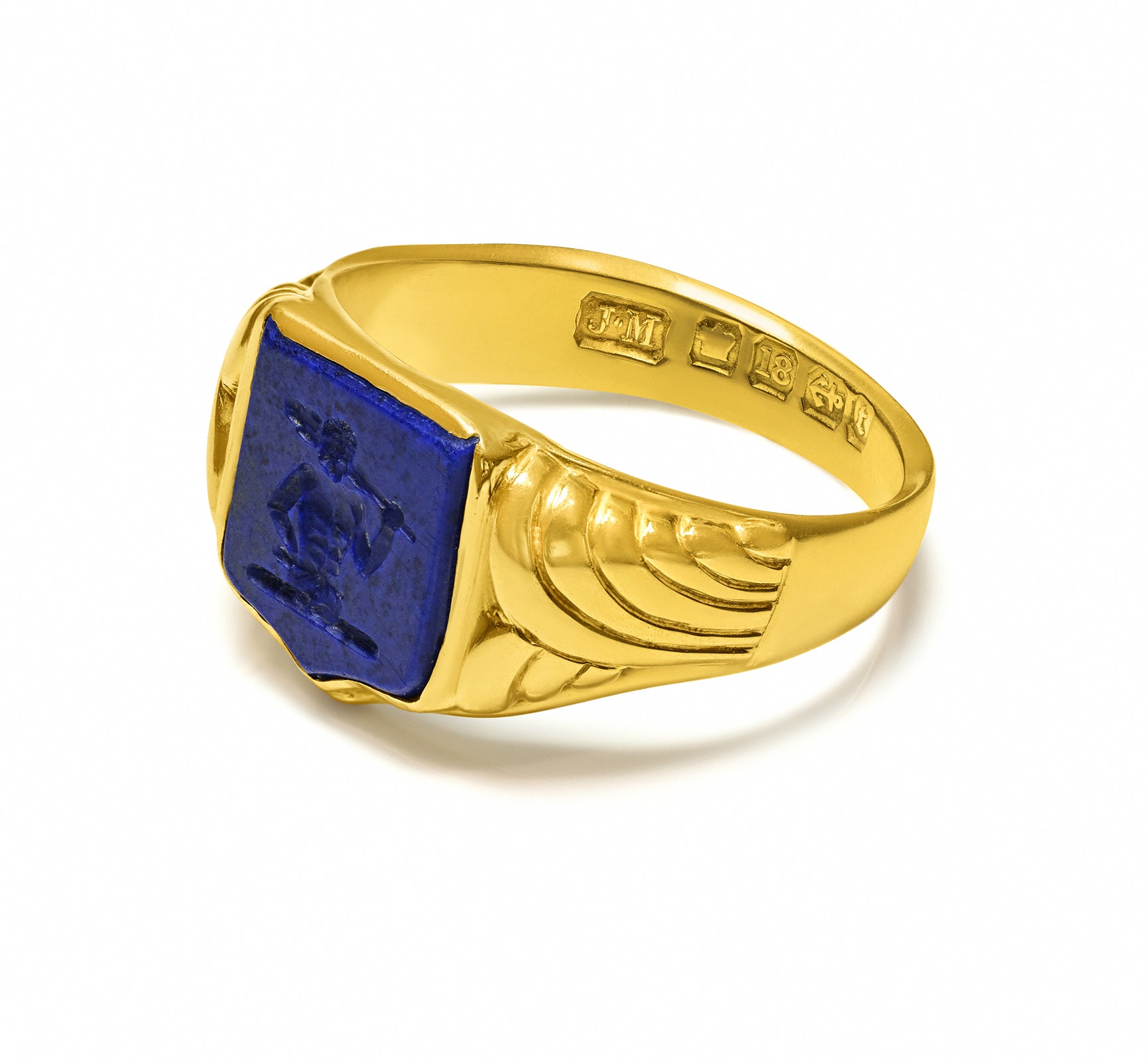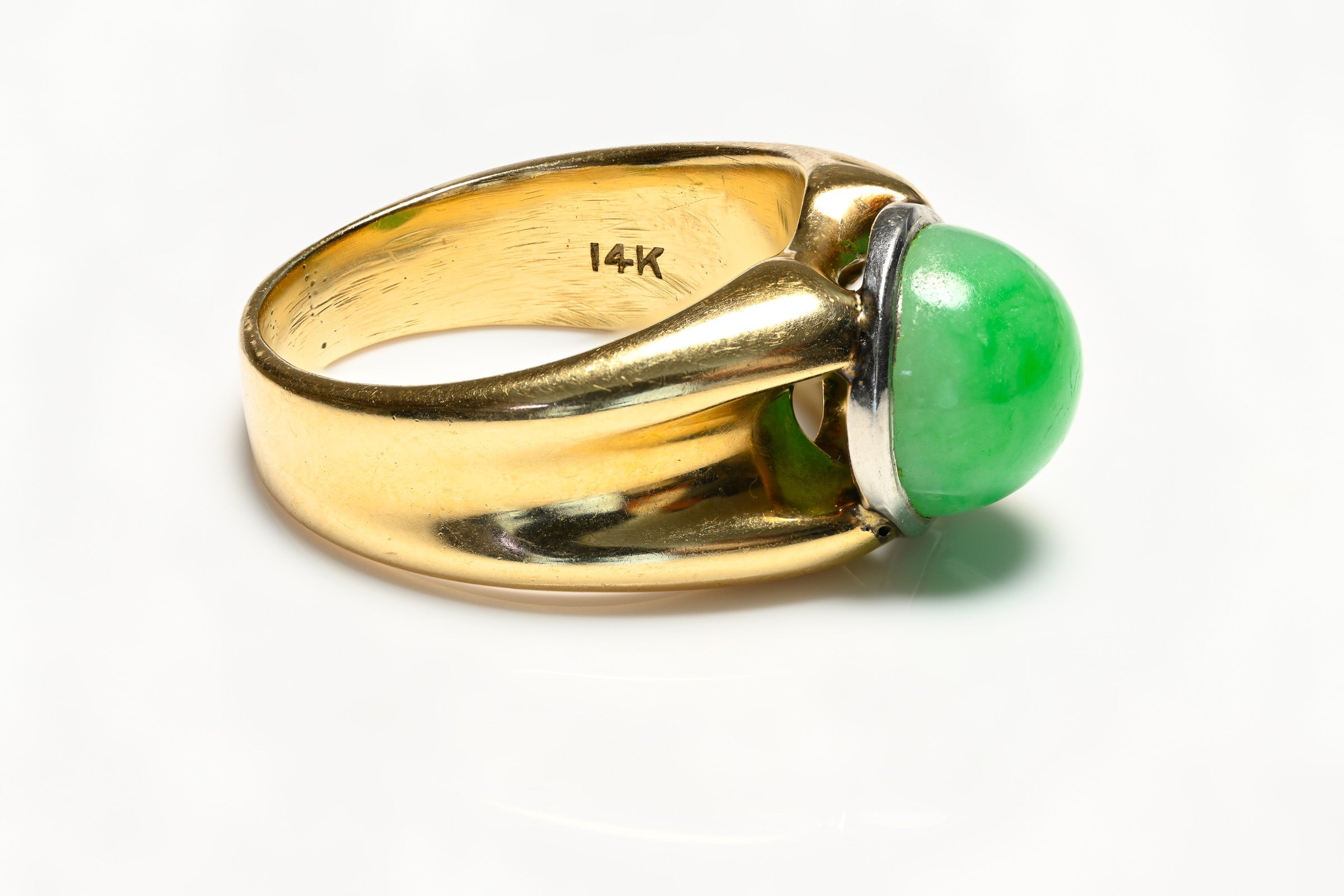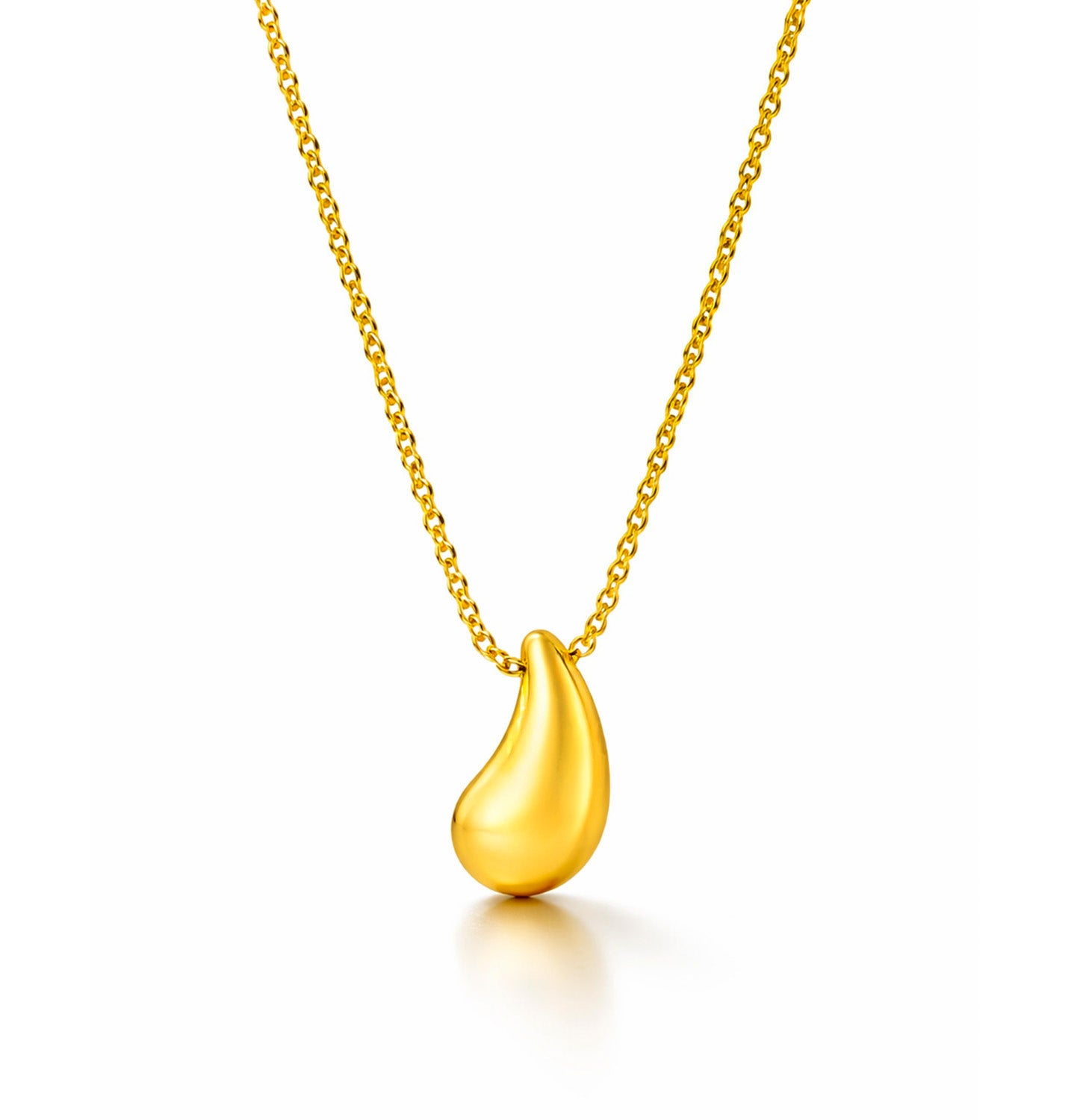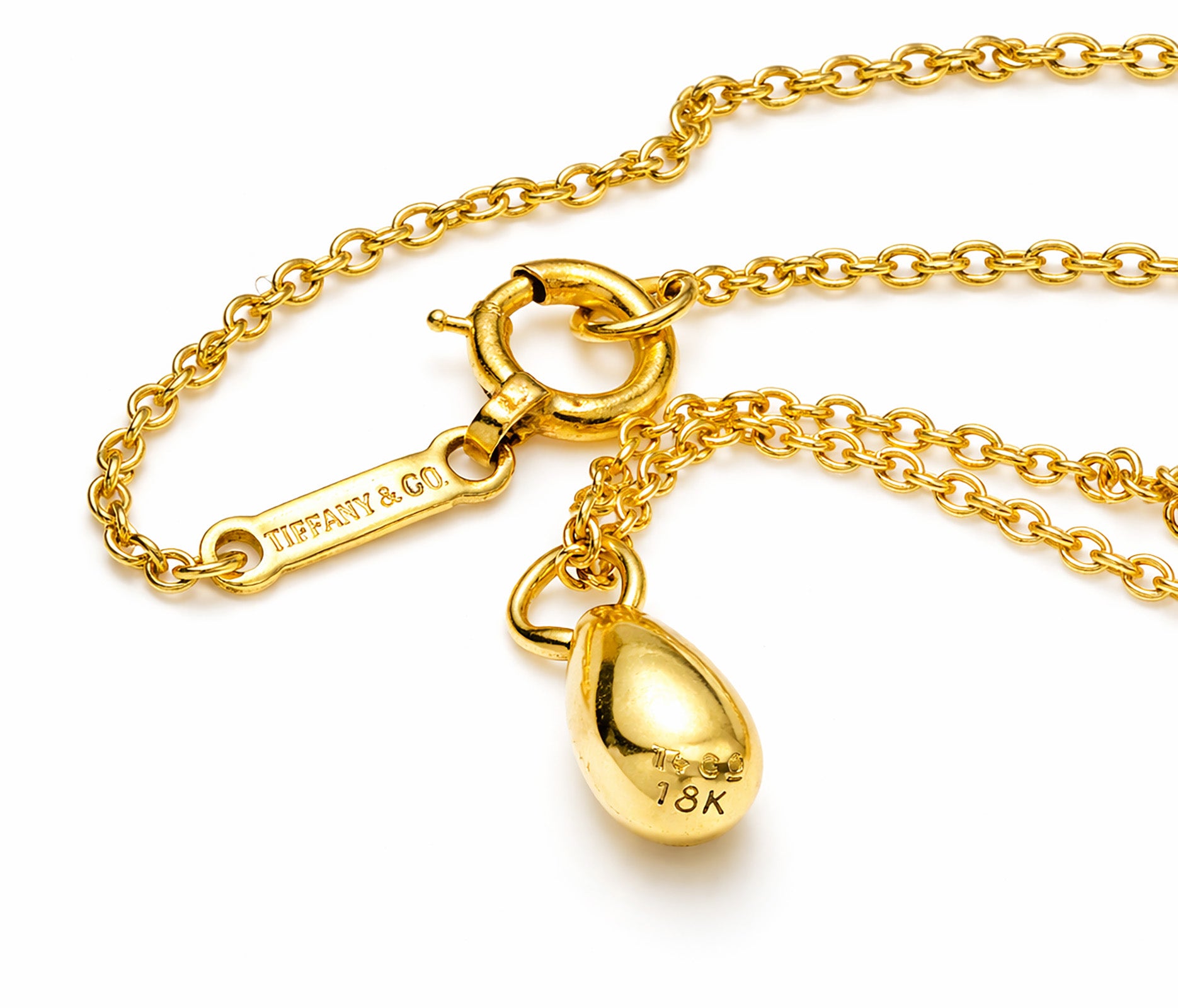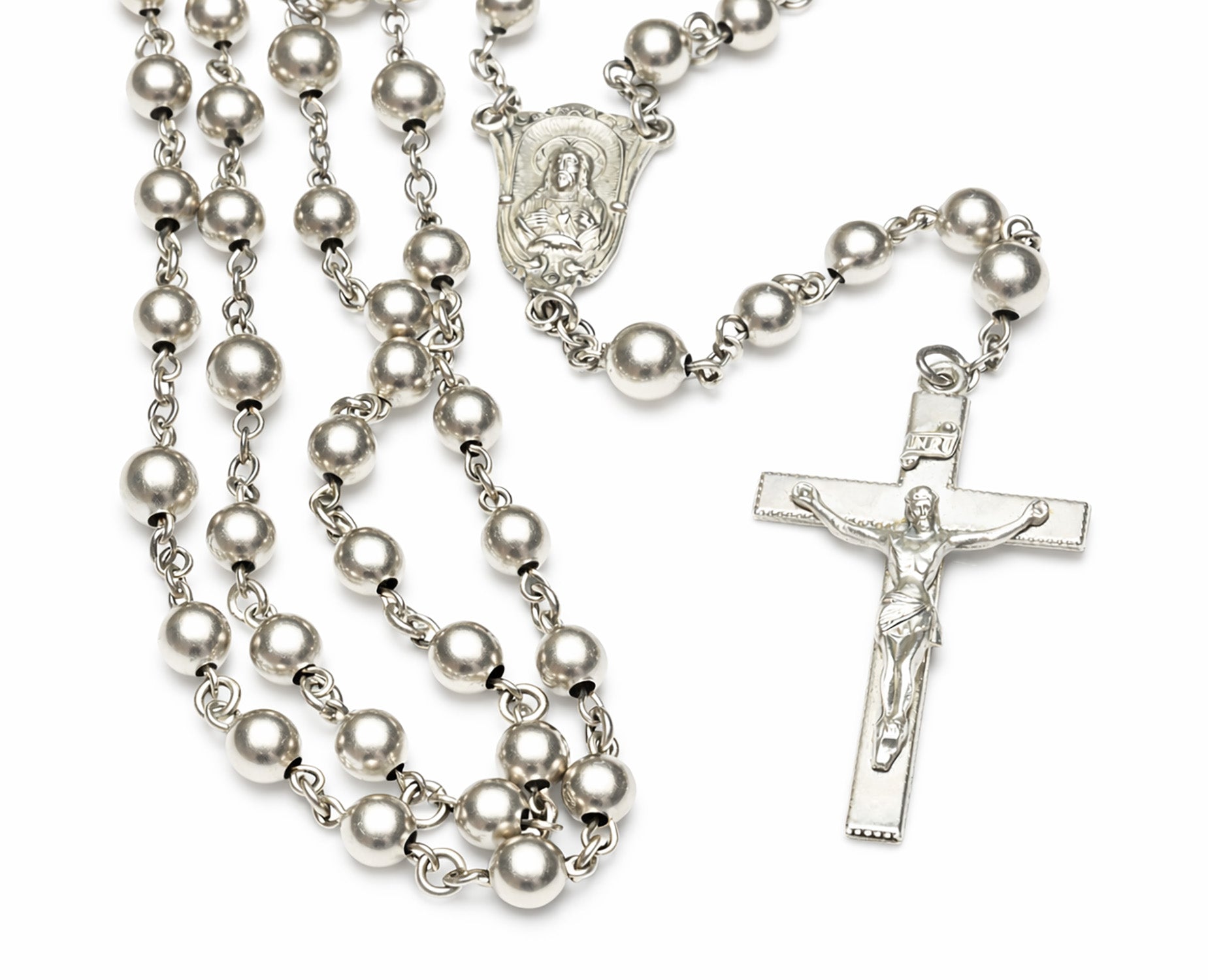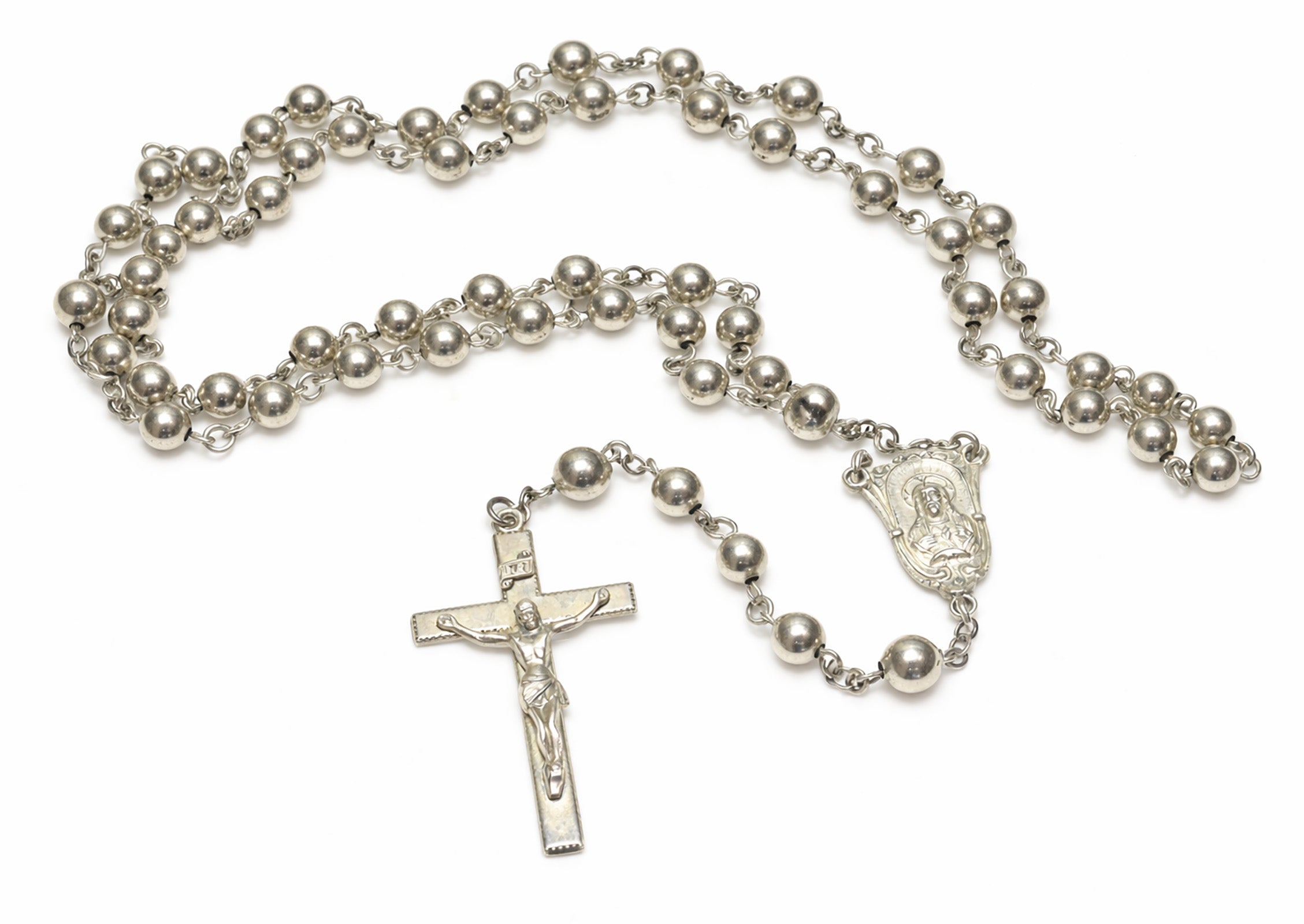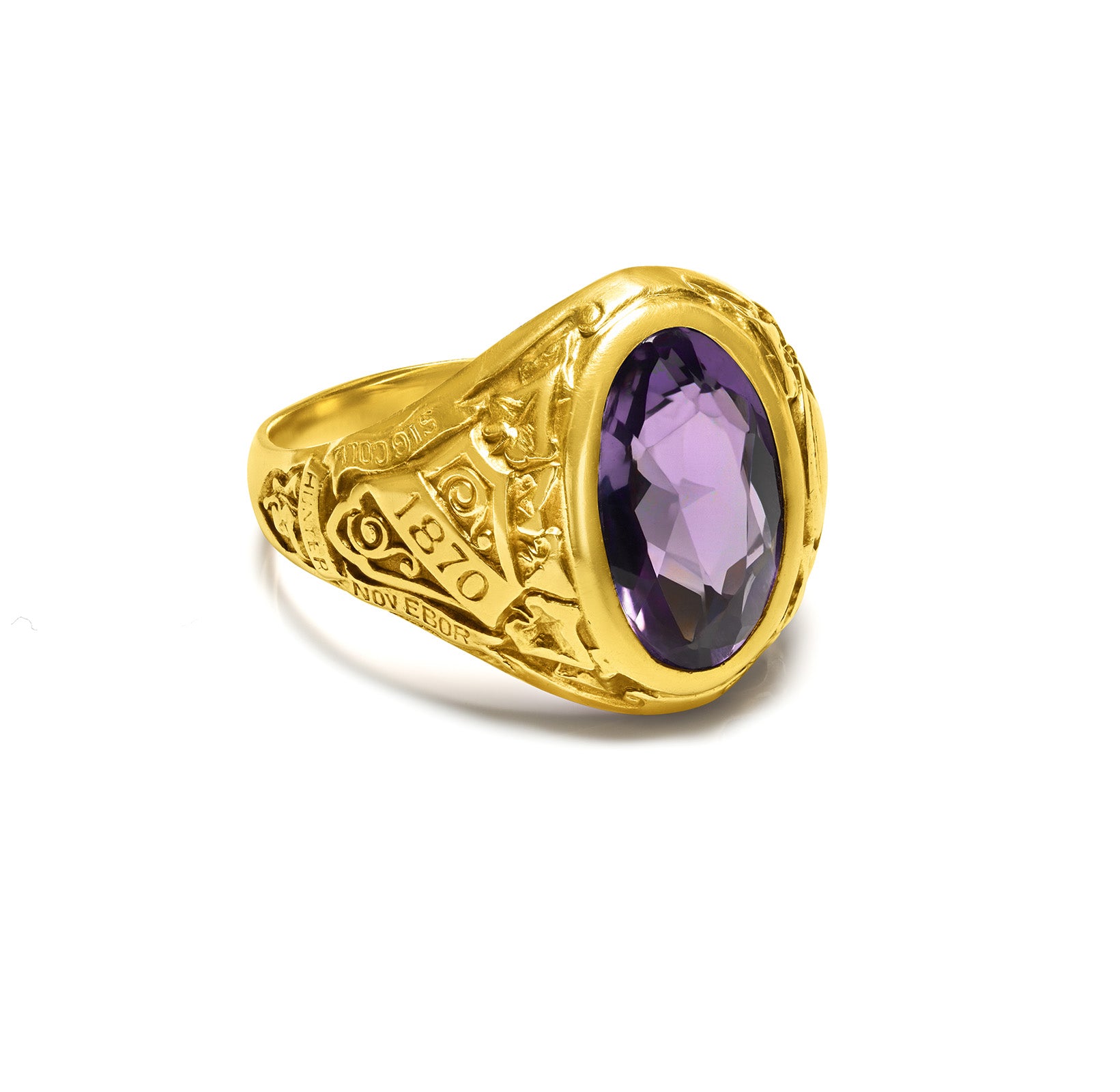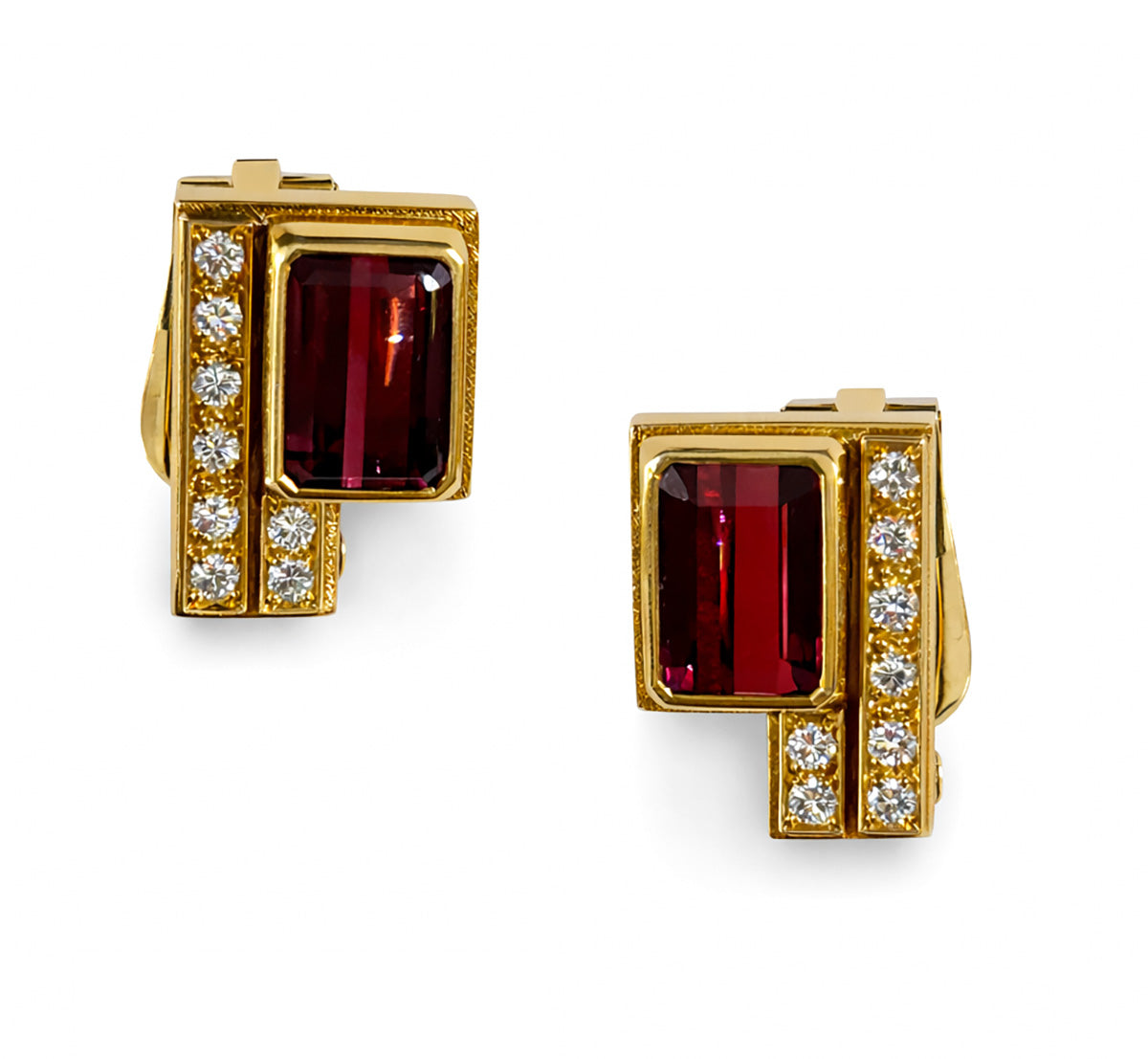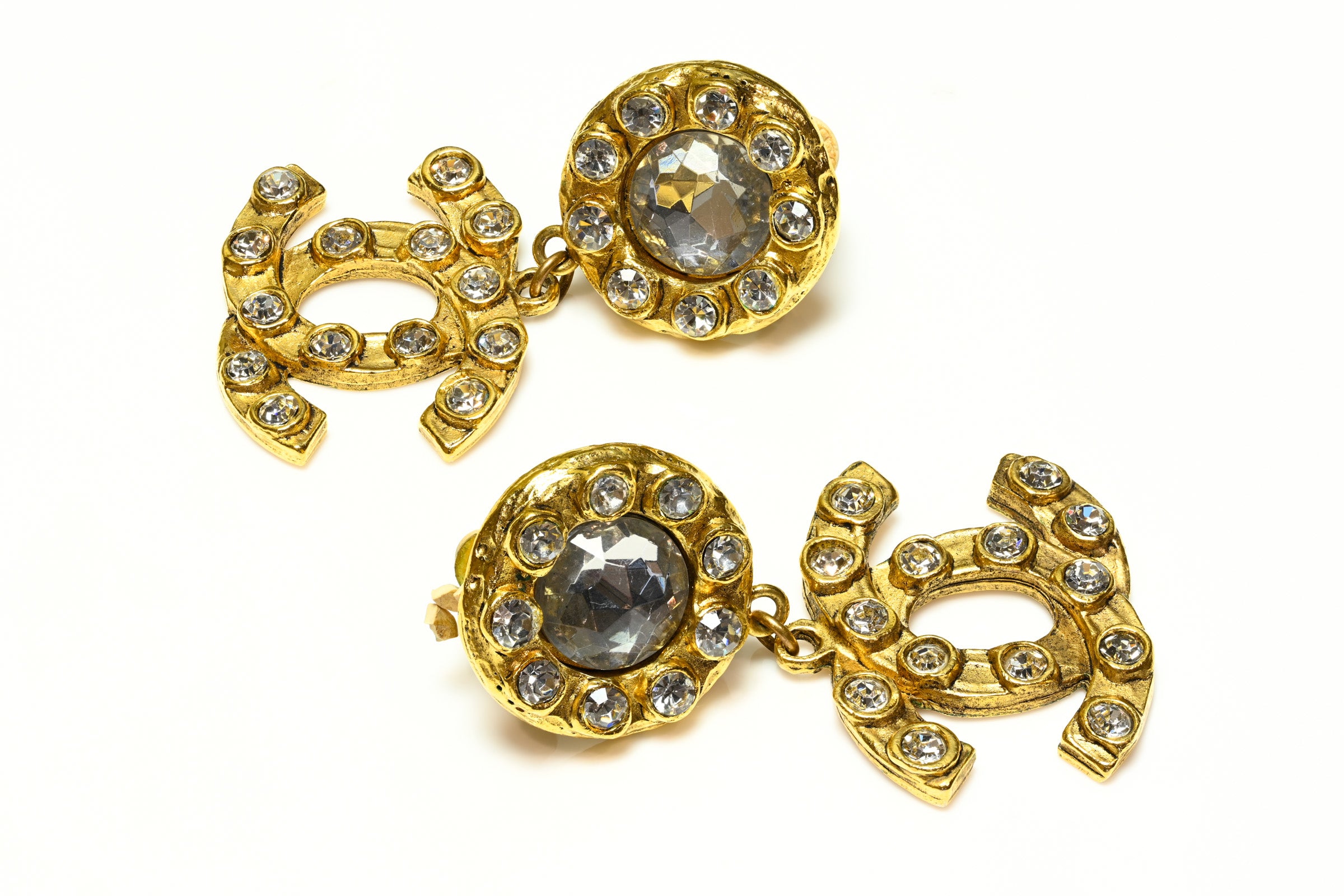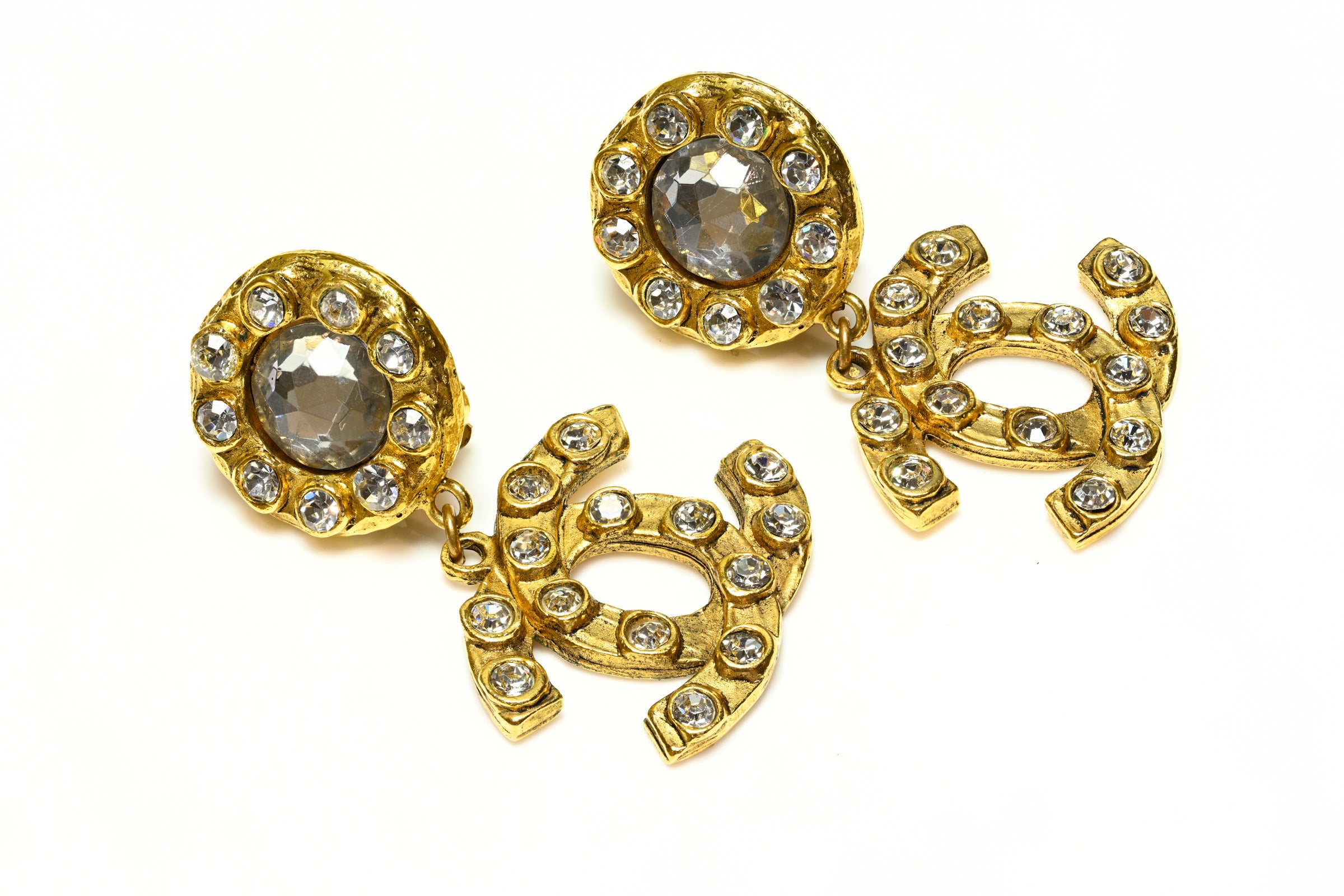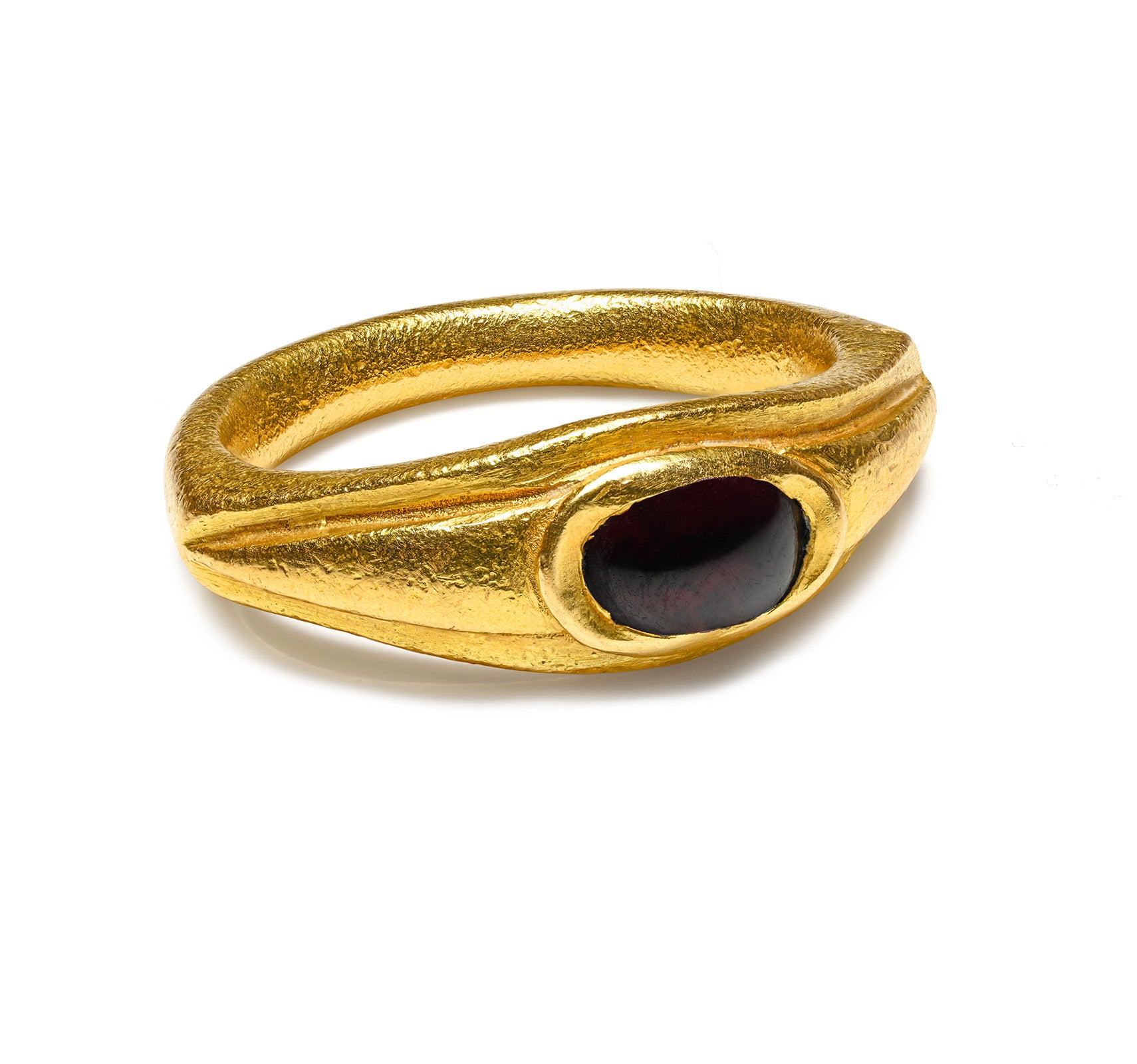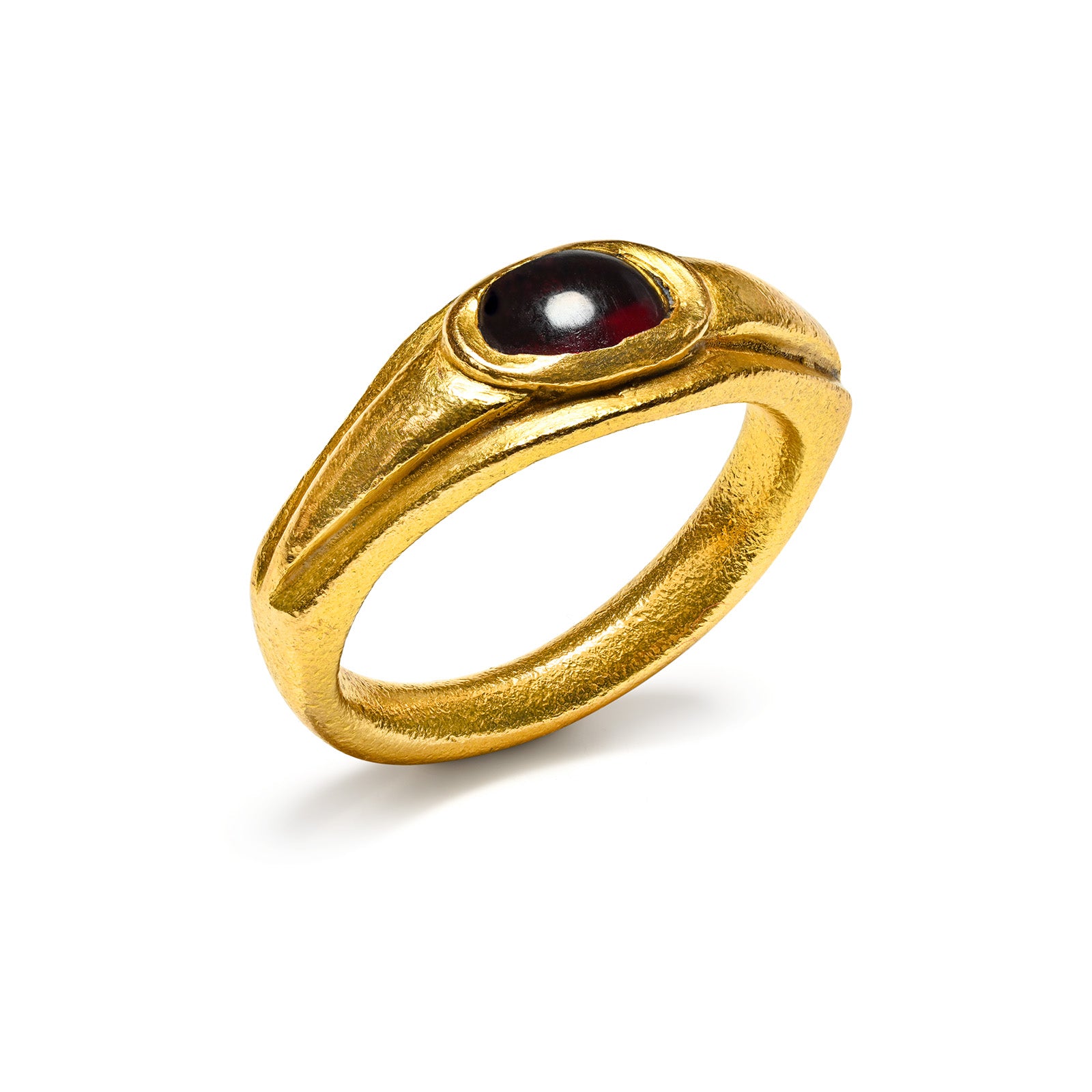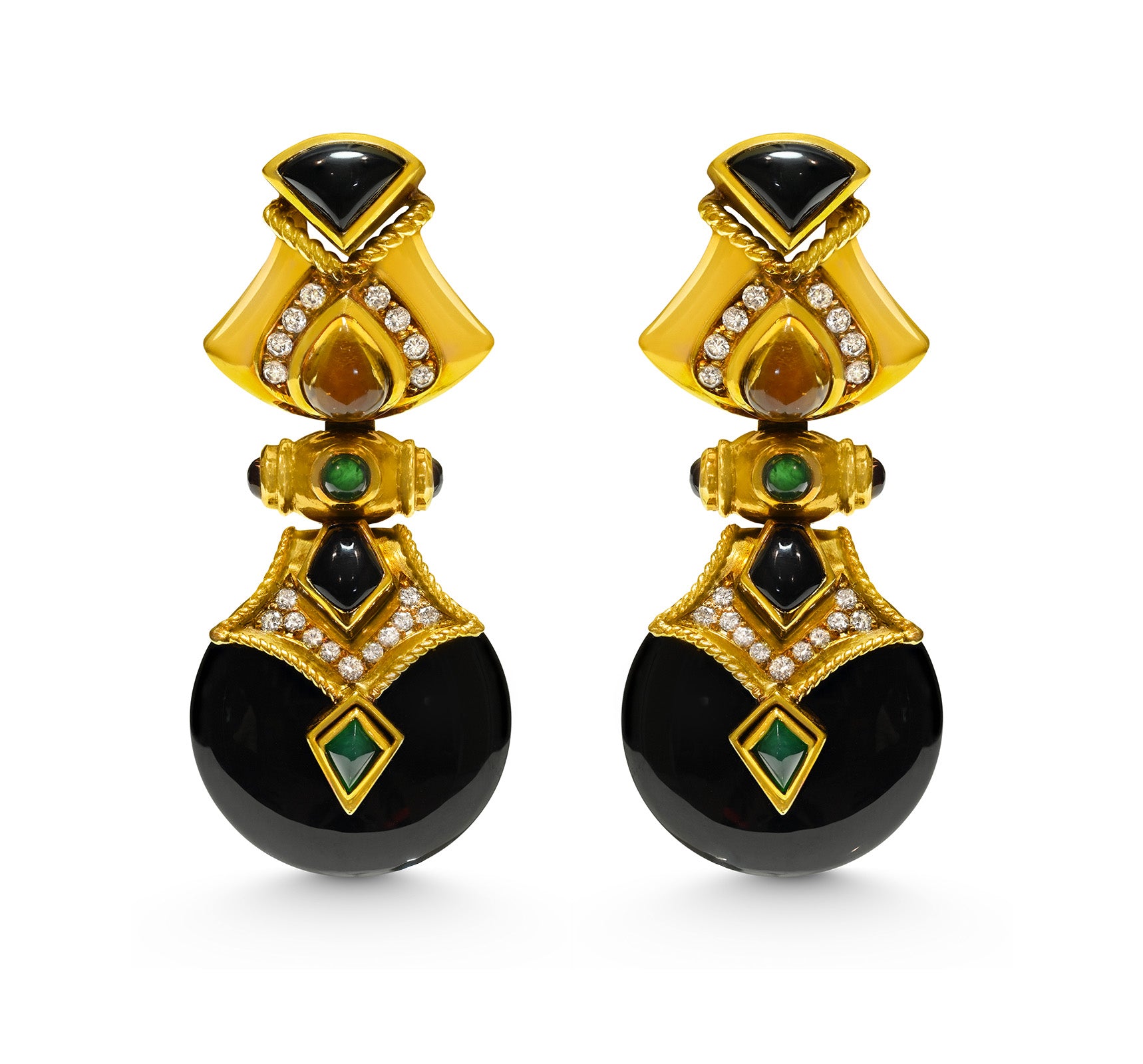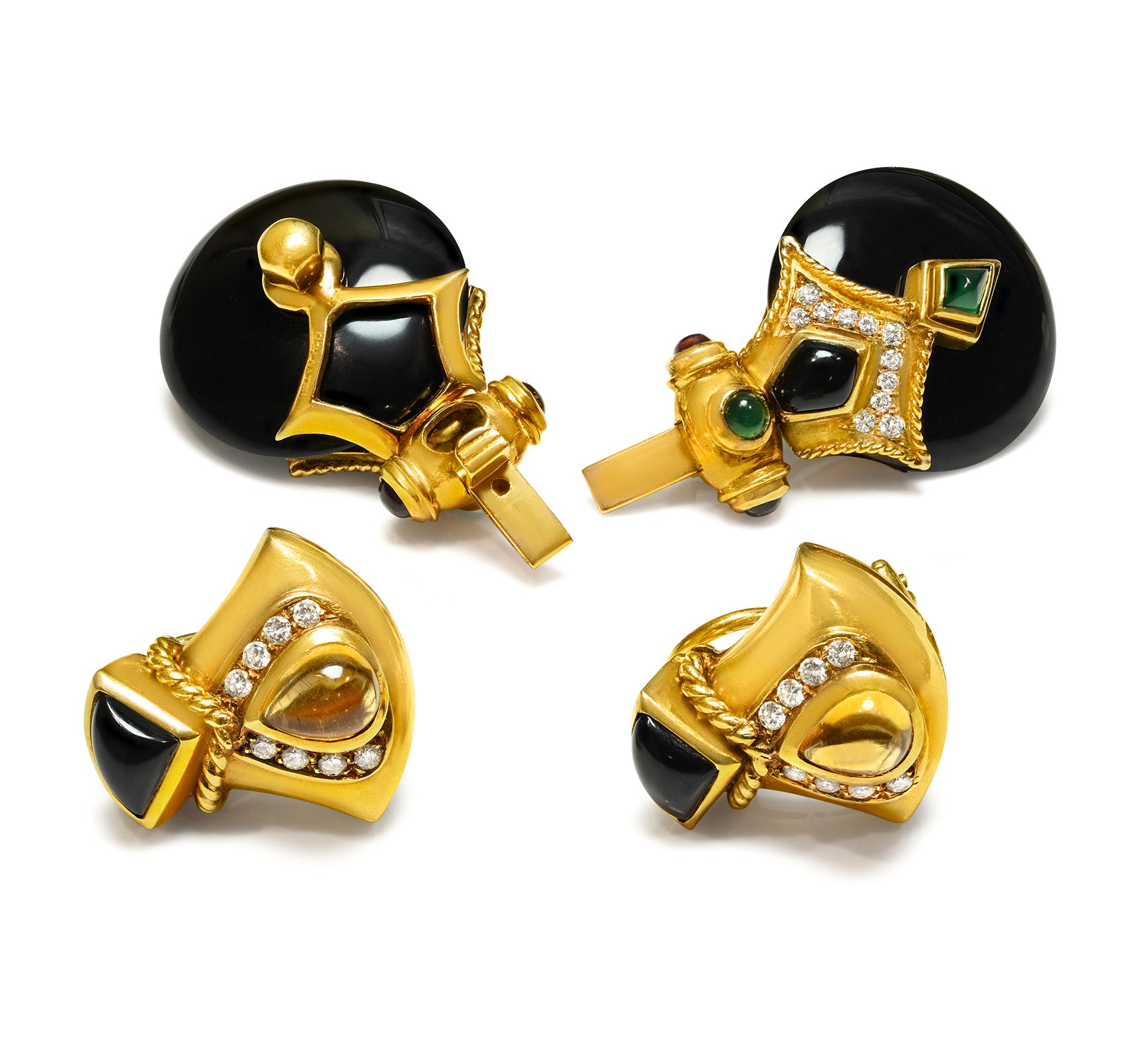
Jewelry Hallmarks: How to Identify Authenticity, Purity & Value
What Are Jewelry Hallmarks and Why They Matter
Jewelry hallmarks are tiny, stamped symbols, letters, or numbers found on fine jewelry and precious metal items. These marks act as an official certification of a piece’s metal purity, origin, and sometimes even its age.
Whether engraved inside the band of a gold ring or discreetly placed on the clasp of a silver necklace, hallmarks are the jewelry world’s built-in passport — a guarantee of authenticity and quality.
For collectors, dealers, and jewelry lovers, understanding hallmarks is an essential skill. They not only confirm that a piece is genuine, but also unlock valuable historical details such as the name of the maker, the assay office that tested it, and the exact year it was crafted.
This knowledge can make the difference between spotting a rare, high-value antique and buying a cleverly made imitation.
By mastering hallmark reading, you gain the ability to:
-
Verify authenticity – Protect yourself from counterfeits and misrepresented pieces.
-
Assess quality – Know exactly what metal purity you’re getting.
-
Determine value – Identify pieces that are more desirable in the market.
-
Uncover history – Connect with the craftsmanship and traditions of different eras.
In this ultimate guide, we’ll take you through the fascinating history of jewelry hallmarks, explore the different types, teach you where to find them, and show you exactly how to read and interpret them like a professional appraiser.

The History and Evolution of Jewelry Hallmarks
Hallmarking is one of the oldest forms of consumer protection in the world, with roots going back more than 700 years. At its core, hallmarking was introduced to protect buyers from fraud by verifying the purity of precious metals — a safeguard that has stood the test of time.
Early Origins
Although primitive forms of metal marking existed in ancient civilizations, the formal system of hallmarking began in medieval Europe.
-
France, 1238 – King Louis IX ordered all goldsmiths to stamp their creations with a maker’s mark to ensure responsibility for quality.
-
England, 1300 – King Edward I made hallmarking mandatory for gold, establishing what would become the world’s most comprehensive hallmarking system.
Expansion and Standardization
By the 14th to 17th centuries, hallmarking practices had spread across Europe, with each country creating its own unique symbols, purity standards, and assay offices. Notable developments include:
-
Germany and Italy – Early adoption of city-specific assay marks.
-
Russia – Introduction of the “kokoshnik” head mark for silver.
The Industrial Revolution and Beyond
The 19th century’s surge in jewelry production made hallmarking even more critical. Countries formalized their systems, and many symbols from that era are still recognized today.
In the 20th century, hallmarking entered a new phase with the Vienna Convention on the Control of Precious Metal Articles (1972), which established mutual recognition of hallmarks between member nations — a major step toward global standardization.
Today, hallmarks are not just regulatory marks — they are treasured clues for historians, collectors, and anyone passionate about fine jewelry.

Main Types of Jewelry Hallmarks
Hallmarks fall into several main categories, each revealing a different aspect of a jewelry piece’s identity. By learning to recognize and interpret these marks, you can confidently assess any piece you come across. The five most important categories are:
-
Metal Purity Marks
-
Maker’s Marks
-
Assay Office Marks
-
Date Letters (especially in British jewelry)
-
Additional Marks (trademarks, patents, copyrights)
We’ll start with the most fundamental — metal purity marks.
1. Metal Purity Marks
Metal purity marks indicate the exact composition of the precious metal in your jewelry. They are the foundation of hallmarking because they tell you how much of the piece is made from gold, silver, platinum, or palladium versus alloy metals.
The Karat System for Gold
The karat system, abbreviated as K, is the most widely recognized way to measure gold purity:
-
24K – 99.9% pure gold; extremely soft and rarely used for wearable jewelry.
-
22K (916) – 91.6% pure gold; common in high-purity pieces from India and Asia.
-
18K (750) – 75% pure gold; the luxury standard in fine jewelry, offering a perfect balance between richness and durability.
-
14K (585) – 58.3% pure gold; popular in the U.S. for its affordability and strength.
-
10K (417) – 41.7% pure gold; more resistant to wear but with a paler color.
-
9K (375) – 37.5% pure gold; common in UK and European vintage jewelry.
Pro Tip: The number inside parentheses (like 750 or 585) refers to the millesimal fineness scale, which expresses purity in parts per thousand.

The “925” Mark for Sterling Silver
Sterling silver is one of the most beloved metals in jewelry making, known for its luster and versatility. Pure silver (999) is too soft for everyday wear, so it’s alloyed — most often with copper — to improve durability.
Common silver purity marks include:
-
925 – 92.5% silver; the sterling silver standard worldwide.
-
958 – Britannia silver (95.8% pure); softer and more malleable.
-
800 / 835 – Common European standards for silverware and older jewelry.
If you see “925” stamped discreetly near the clasp of a bracelet or inside a ring band, you’re looking at sterling silver.

Platinum and Palladium Purity Marks
Platinum and palladium, members of the platinum group of metals, have their own marking systems:
-
950 – 95% pure platinum or palladium; the most common standard.
-
900 – 90% pure platinum.
Some countries use the chemical symbol Pt for platinum or Pd for palladium alongside the purity number.
Why Metal Purity Marks Matter
-
Value Assessment: Higher purity usually equals higher value.
-
Authenticity Verification: Confirms the metal is genuine and not plated or imitation.
-
Buying Confidence: Helps you make informed decisions when investing in fine jewelry.

2. Maker’s Marks
If metal purity marks tell you what your jewelry is made of, maker’s marks tell you who made it. These marks are among the most exciting parts of hallmarking because they link a piece directly to a specific jeweler, designer, or workshop — sometimes unlocking significant historical and monetary value.
What Are Maker’s Marks?
A maker’s mark is a unique stamp — usually initials, a symbol, or a name — placed on a piece of jewelry by its creator. It acts like a signature on a painting, identifying the craftsperson or company responsible for its design and production.
Maker’s marks can range from simple two-letter initials to elaborate logos or pictorial symbols, and their style often reflects the era in which they were used.
Why Maker’s Marks Are Important
-
Origin & Provenance – They help trace where and by whom a piece was made.
-
Authenticity – A known mark confirms the piece is genuine, not a copy.
-
Value Enhancement – Jewelry from renowned houses like Cartier, Tiffany & Co., Van Cleef & Arpels, or Boucheron can command premium prices simply because of the name associated with it.
Examples of Famous Maker’s Marks
-
Tiffany & Co. – Usually spelled out in full, often accompanied by metal purity marks.
-
Cartier – Sometimes includes the full name, other times just “Cartier” in script.
-
Bvlgari – Distinctive use of the classical Roman “V” in place of “U.”
-
Lalique – Art Nouveau masterpieces often bear the “Lalique” script mark.
-
David Webb – Bold capital “WEBB” stamp, reflecting the designer’s dramatic style.
Even smaller workshops and individual artisans have their own marks — such as intertwined initials, symbolic shapes, or regional codes.

How to Identify a Maker’s Mark
-
Use Hallmark Reference Books – Books like “American Jewelry Manufacturers” by Dorothy T. Rainwater or “British Hallmarks” by Judith Banister are excellent resources.
-
Online Databases – Sites like the Online Encyclopedia of Silver Marks or the French Poinçons database can help with European marks.
-
Auction House Catalogs – Famous houses often publish detailed maker’s mark images in their lot descriptions.
Pro Tip for Collectors
When buying estate or antique jewelry, always verify the maker’s mark alongside metal purity marks. A ring marked “18K” is valuable — but if it also carries the maker’s mark of Cartier, its value can multiply several times over due to the brand’s prestige and collectability.

3. Assay Office Marks
If metal purity marks tell you the quality of the metal and maker’s marks tell you the origin, assay office marks tell you who verified and certified the piece.
An assay office mark is a small stamped symbol placed on precious metal items by an officially recognized assay office. Its purpose is to guarantee the authenticity and purity of the metal — a third-party verification that gives buyers full confidence.
Why Assay Office Marks Matter
-
Official Certification – They confirm the item has been tested and meets legal purity standards.
-
Origin Identification – Each assay office has its own unique emblem, allowing you to trace where the metal was tested.
-
Value Boost – A hallmark from a prestigious assay office can enhance desirability and market value.
Famous Assay Office Marks Around the World
United Kingdom
The UK hallmarking system is one of the most detailed in the world. Notable assay office marks include:
-
Leopard’s Head – London Assay Office (crowned before 1822, uncrowned after).
-
Anchor – Birmingham Assay Office.
-
Castle – Edinburgh Assay Office.
-
Three Wheat Sheaves – Chester Assay Office (closed in 1962).
France
French assay marks are known as poinçons:
-
Eagle’s Head – Gold items (introduced 1838, still in use).
-
Minerva’s Head – Silver items.
-
Boar’s Head – Small silver items under 30 grams.
Italy
Italian marks typically feature:
-
Star Symbol – Followed by a number and two-letter province code.
-
Example: ★ 1 TO → Torino Assay Office.
-
Russia
-
Pre-revolutionary marks often include the double-headed imperial eagle or a kokoshnik (traditional headwear), paired with fineness numbers.
-
Modern Russian marks include a woman’s profile in a kokoshnik and the fineness number.
United States
-
The U.S. does not have a government assay office system. Instead, marks are applied directly by manufacturers or private assay firms.
How to Read an Assay Office Mark
-
Identify the Symbol – Look for a pictorial icon, not just numbers or letters.
-
Check the Country of Origin – Many marks are unique to specific countries or even cities.
-
Match with Official Charts – Countries often publish official hallmark guides; the UK’s Goldsmiths’ Company maintains one of the most comprehensive databases.
Example
A gold bracelet marked 750 with an Anchor symbol means:
-
750 → 18K gold.
-
Anchor → Certified by Birmingham Assay Office.
This level of detail not only verifies authenticity but also adds to the story and provenance of the piece — an important selling point for collectors and investors.
Collector’s Tip: If you see a high-purity mark (like 18K or 22K) without an assay office mark in countries that require one, proceed with caution — it may be a reproduction or an unverified piece.

4. Date Letters in British Jewelry Hallmarks
Date letters are a distinctive feature of British hallmarking, used to indicate the exact year in which a piece of jewelry was officially assayed. While purity marks tell you the metal’s composition, date letters reveal when it was tested and marked — adding historical and collectible value.
How Date Letters Work
Every year, each British assay office assigns a specific letter of the alphabet to represent that year.
-
The style of the letter (uppercase or lowercase),
-
The font used, and
-
The shape of the shield or cartouche surrounding it
change regularly to prevent confusion across different time periods.
This means the same letter could appear multiple times across centuries, but the shield shape and font will reveal which year it actually represents.
Example in Practice
Imagine finding a lowercase “b” inside a pointed shield. In the London Assay Office records, that specific style might correspond to 1917.
However, the same lowercase “b” in a rectangular shield could indicate a completely different year, or even belong to another assay office such as Birmingham or Edinburgh.
Why Date Letters Are Important
-
Accurate Dating: They provide precise dating of British jewelry, something purity marks like “925” (silver) or “750” (gold) cannot do.
-
Authenticity Verification: Matching a date letter to official assay charts confirms whether the piece is genuinely antique or vintage.
-
Historical Insight: Knowing the exact year can help you understand the era’s design trends, the impact of economic conditions, or even wartime restrictions on precious metals.
Expert Tip: Collectors often use a jeweler’s loupe and an official date letter chart from the relevant assay office to interpret these marks. This simple step can turn a mystery ring into a documented piece of history.

5. Additional Marks on Jewelry Pieces
Beyond the main hallmarks like metal purity marks, maker’s marks, and assay office symbols, jewelry can carry additional markings that reveal more about its origin, design, and legal protections. These often go unnoticed but can greatly enhance the historical and market value of a piece.
Trademark Symbols
A trademark is a unique logo, name, or symbol that identifies the brand or manufacturer.
-
Purpose: Confirms authenticity and builds brand recognition.
-
Example: The engraved “Tiffany & Co.” stamp instantly associates a piece with one of the world’s most prestigious jewelers, boosting both trust and resale value.
Design Patents
A design patent mark indicates that the visual appearance of a piece is legally protected.
-
Format: Often includes the word “PAT” or “Pat. No.” followed by a registration number and sometimes a date.
-
Value Factor: A patented design can make a jewel rarer and more desirable to collectors because it represents an officially registered artistic creation.
Copyright Marks
Copyright marks safeguard the artistic elements of a jewelry design.
-
Format: Usually the © symbol, followed by a year and the creator’s name or company.
-
Importance: Ensures the design cannot be legally copied without permission, which is crucial for maintaining exclusivity.
Other Informative Marks
-
GP / GEP: Indicates gold-plated or gold-electroplated jewelry.
-
GF: Gold-filled, meaning a thicker gold layer than standard plating.
-
Country of Origin: Some pieces include a “Made in…” mark to comply with export/import laws.
Expert Tip: When evaluating a jewel, don’t just look for the main hallmarks — inspect every surface, clasp, and hidden part. These additional marks can tell you about manufacturing methods, brand heritage, and even the legal status of the design.

6. Finding Hallmarks: Where to Look on Your Jewelry Pieces
Knowing where to look for hallmarks on jewelry is essential if you want to verify authenticity, determine metal purity, or trace the origin of a piece. Hallmarks are usually placed in discreet areas to avoid affecting the design, but they remain accessible for inspection.
Rings
-
Location: Inside the band, on the inner curve.
-
Common Marks: Metal purity marks like “18K” or “750,” maker’s initials, and sometimes date letters.
-
Tip: Use a jeweler’s loupe or magnifying glass to spot faint or worn marks on antique rings.

Chains and Necklaces
-
Location: On the clasp or on a small tag near the clasp.
-
Common Marks: Purity stamps (“925,” “750”) and sometimes country of origin.
-
Tip: High-end brands may also engrave their name on the clasp itself for authenticity.
Bracelets
-
Location: Near the clasp, on a flat link, or inside a solid bangle.
-
Common Marks: Purity and maker’s marks.
-
Tip: For vintage or antique bracelets, marks can sometimes be inside the hinge area.

Earrings
-
Location: On the posts, backs, or inner curve of hoops.
-
Common Marks: Purity marks and sometimes the brand logo.
-
Tip: For clip-on styles, check the hinge mechanism or underside of the clip for hallmarks.

Expert Insight: Hallmarks may be tiny, faint, or partially worn, especially on antique pieces. Always check with good lighting and magnification. In some cases, professional cleaning can reveal marks that were previously obscured by dirt or oxidation.
7. Antique vs. Vintage vs. Modern Jewelry Hallmarks
Understanding the age of jewelry hallmarks can reveal valuable clues about a piece’s history, craftsmanship, and authenticity. Each era—antique, vintage, and modern—has its own hallmarking style, reflecting the technology and regulations of the time.
Antique Jewelry Hallmarks (generally pre-1920s)
-
Characteristics:
-
Hand-stamped impressions, often deep but slightly irregular.
-
Ornate crests, elaborate shields, and symbolic imagery.
-
Full hallmark sets on British pieces, including purity, maker, assay office, and date letter.
-
-
Example: A Victorian ring with a crown symbol, “18” for gold purity, leopard’s head for London, and a date letter.
-
Collecting Tip: Antique hallmarks can sometimes be partially worn, so using a loupe and comparing with official hallmark charts is essential.
Vintage Jewelry Hallmarks (approximately 1920s–1980s)
-
Characteristics:
-
More uniform and precise due to mechanized stamping.
-
Stylized fonts and geometric shapes influenced by Art Deco and Retro design movements.
-
Increased use of maker’s initials or registered trademarks instead of full crests.
-
-
Example: A 1950s bracelet stamped “14K” with a small maker’s logo in a geometric frame.
-
Collecting Tip: Vintage hallmarks often reflect the branding trends of the time, making them easier to link to specific designers or manufacturers.
Modern Jewelry Hallmarks (1980s–present)
-
Characteristics:
-
Laser engraving for sharp, consistent marks, often smaller but highly legible.
-
International purity standards such as “750” for 18K gold or “925” for sterling silver.
-
Streamlined hallmark sets—date letters are mostly retained in UK hallmarking but are often absent elsewhere.
-
-
Example: A contemporary designer ring engraved with “Pt950” (platinum), brand name, and country of origin.
-
Collecting Tip: Modern hallmarks are generally easier to read, but beware of counterfeits—high-quality fakes can replicate modern marks convincingly.
Expert Insight: Recognizing whether a hallmark is antique, vintage, or modern is critical for accurately dating a piece, assessing its market value, and verifying authenticity. For collectors, hallmarks are more than just stamps—they are a historical fingerprint.

8. Reading and Interpreting Jewelry Hallmarks Like a Pro
Learning how to read jewelry hallmarks transforms you from a casual admirer into an informed collector. Every stamp tells part of the story—its metal purity, maker, origin, and sometimes even the exact year it was made.
Step 1: Identify All Marks
Examine the piece carefully under a jeweler’s loupe or magnifying glass. Hallmarks are often grouped together in discreet areas—inside a ring band, near a bracelet clasp, or on the back of a pendant.
Step 2: Recognize the Main Types of Symbols
-
Metal Purity Marks – e.g., “750” (18K gold), “925” (sterling silver), “950” (platinum).
-
Maker’s Marks – initials, logos, or symbols representing the manufacturer or designer.
-
Assay Office Marks – pictorial symbols showing where the item was tested (e.g., anchor for Birmingham).
-
Date Letters – specific to some countries like the UK, indicating the year of assay.
Step 3: Understand Additional Symbols
-
GP or GEP – gold plated or gold electroplated.
-
GF – gold filled.
-
Patent Numbers or Trademarks – indicate legal protection and can help pinpoint the period of production.
Step 4: Cross-Reference with Reliable Sources
Compare your marks with trusted hallmark charts from official assay offices, government resources, or reputable jewelry reference books. This ensures accurate identification and helps detect counterfeits.
Example:
A ring marked “925 AB Anchor K” reveals:
-
925 – Sterling silver purity.
-
AB – Maker’s initials.
-
Anchor – Birmingham Assay Office.
-
K – Date letter corresponding to a specific year.
Pro Tip for Collectors: Documenting the hallmarks of each piece in your collection—along with photographs and research notes—will help preserve provenance, protect investment value, and make insurance claims easier.

9. The Importance of Jewelry Hallmarks in Determining Value and Authenticity
When it comes to buying, selling, or collecting fine jewelry, jewelry hallmarks are one of the most reliable tools for determining both value and authenticity. These small stamps are far more than decorative—they are a guarantee backed by centuries of tradition and legal standards.
Why Jewelry Hallmarks Matter for Value
-
Metal Purity Verification – Hallmarks confirm whether a piece is solid gold, sterling silver, or platinum, and disclose its exact fineness (e.g., 14K, 18K, 925). This purity level has a direct impact on the intrinsic value of the metal.
-
Maker’s Prestige – A hallmark from a renowned jeweler, such as Cartier, Tiffany & Co., or Boucheron, can dramatically increase a piece’s market value.
-
Assay Office Credibility – Official assay marks assure buyers that the metal has passed strict purity tests conducted by accredited institutions.
-
Historical Significance – Date letters and old assay office marks can elevate value for antique and vintage jewelry by confirming its age and origin.
Hallmarks as Proof of Authenticity
Counterfeit jewelry often lacks correct hallmarks—or uses incorrect or poorly stamped imitations. By learning to read jewelry hallmarks, you can instantly distinguish genuine pieces from fakes. For example:
-
A fake “18K” gold ring might show shallow, uneven stamps and lack any accompanying maker’s or assay marks.
-
An authentic 18K ring will typically have a sharp, well-defined hallmark set, sometimes accompanied by the maker’s initials and assay symbol.
For Collectors and Investors
Understanding and verifying jewelry hallmarks is essential for anyone building a collection or making investment purchases. A properly hallmarked piece not only holds value but can appreciate over time, especially if it carries historical or artistic significance.
Pro Tip: Always photograph hallmarks before purchase or resale. If buying online, request clear hallmark images from the seller. This extra step can save you from costly mistakes.

10. FAQs About Jewelry Hallmarks
1. What are jewelry hallmarks?
Jewelry hallmarks are official marks stamped on precious metal items to certify their metal purity, origin, and sometimes the year of manufacture. They act as a trusted system to confirm authenticity and quality in gold, silver, platinum, and palladium pieces.
2. Why are jewelry hallmarks important?
They are important because jewelry hallmarks help buyers verify that a piece is genuine, determine its metal purity, identify the maker, and estimate its value. They also provide historical insights, especially for antique and vintage jewelry.
3. Where can I find hallmarks on jewelry?
Hallmarks are typically found in discreet spots such as:
-
Inside ring bands
-
Near clasps on necklaces and bracelets
-
On earring posts or backs
-
On the underside of brooches
Checking these areas is the first step in reading jewelry hallmarks accurately.
4. How can I read jewelry hallmarks?
To read jewelry hallmarks, you need to:
-
Use a magnifying glass or jeweler’s loupe to locate all marks.
-
Identify metal purity marks (e.g., 750, 925, 18K).
-
Look for maker’s marks, assay symbols, and date letters.
-
Compare them with hallmark reference charts from trusted sources.
5. Do all countries use the same jewelry hallmarks?
No. Each country has its own hallmarking system. For example, the UK uses assay office symbols and date letters, France uses “poinçons,” and the US relies more on manufacturer markings. Knowing these differences is key to correctly interpreting jewelry hallmarks.
6. Can jewelry hallmarks be faked?
Yes, counterfeiters sometimes stamp fake marks. However, these are often poorly made, incorrectly placed, or missing required symbols. Learning to spot authentic jewelry hallmarks helps protect you from buying fraudulent items.
7. How do jewelry hallmarks affect value?
They directly influence value by confirming the metal’s purity, the reputation of the maker, and the piece’s age or historical significance. Collectors and investors rely heavily on jewelry hallmarks when assessing worth.
8. Are jewelry hallmarks the same as maker’s marks?
Not exactly. Jewelry hallmarks include multiple types of marks—metal purity stamps, assay office symbols, date letters—while a maker’s mark identifies the jeweler or manufacturer.
9. What is the difference between antique, vintage, and modern jewelry hallmarks?
-
Antique hallmarks (pre-1920s) are often hand-stamped and ornate.
-
Vintage hallmarks (1920s–1980s) are more uniform, reflecting industrial production.
-
Modern hallmarks use laser engraving and follow international purity standards.
10. How can I verify jewelry hallmarks before buying?
Request clear images of all hallmarks, compare them with trusted hallmark guides, and consult a professional jeweler or appraiser. This ensures the jewelry hallmarks match the seller’s description and the piece’s claimed value.



